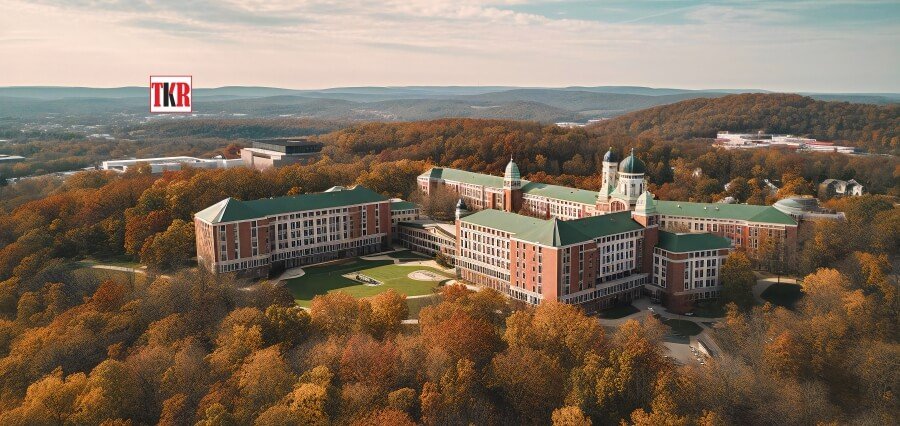Cultivating Talent
South America boasts a rich tapestry of illustrious schools that exemplify the Elite Academies for young minds, schools and programs designed to develop the best and brightest young people. Intensive state schools in Argentina, international curricula at world standards in Brazil and Colombia, among these elite learning institutions, focus on academic achievements, character building, and an international perspective.
Public Institutions: Merit Meets Tradition
The Argentine Colegio Nacional de Buenos Aires, a tuition-free public school that worked in conjunction with the University of Buenos Aires, is one of the most highly acclaimed models. Having an admissions system that includes ten demanding tests and whose annual admission rate is admittedly around 400 out of 1200 candidates, this is an institution that is considered a model of Elite Academies of Young Minds dedicated to merit and intellectual challenge. Students also take an active interest in classical studies, languages, sciences, and arts, and they turn out into Nobel laureates and politicians. This selectivity and openness are characteristic of the region’s elite academies.
International Curricula: Global Readiness
St. Paul School is an international school in São Paulo, Brazil, which provides the Brazilian, British national and International Baccalaureate (IB) courses. It is regularly ranked in the list of the first 150 international group of free schools, acting as a lighthouse in the world of Elite Academies to Young Minds training till the age of 18 and preparing to enter world universities.
Moreover, Nido de Aguilas in Chile provides bilingual education and dual diplomas, including Chilean national, North American, and IB, training multilingual global leaders with international ambitions.
These schools belong to the trend of Elite Academies of Young Minds that encourage teaching in English and orientation towards foreignness based on students’ desire to learn abroad.
Colombia: The Rise of Bilingual Excellence
Some of the most famous international schools in Colombia supporting the Elite Academies for Young Minds template include Colegio Nueva Granada, The Columbus School, Colegio Anglo Colombiano, Colegio Bolivar and Colegio Jorge Washington. These schools, aligned with bilingual curricula, IB curricula and leadership-based disciplines, are true examples of holistic education that supports academic rigor and ethical responsibility.
Cross-Border Collaborations & Programs
In addition to the conventional schools, South America also invests in such programs as La Serena School for Data Science in Chile and US and Chilean teenagers, who study data and astronomy in practice. Such deep exposures are the hallmark of Elite Academies for Young Minds, where these immersive activities merge with highly academic-focused mentorships in guiding students in real-life applications to achieve further innovations.
Argentina has collaborated with other countries on international cosmic-ray experiments with high-school students, again promoting cross-border scientific research as well as scientific cooperation.
Sports Academies: Athletic Excellence Meets Education
In South America, especially in football, sporting academies are critical in developing youth elites. Football clubs such as the River Plate in Argentina and the Santos and Sao Paulo in Brazil are called sporting Elite Academies of athletics with a focus on both the growth of learning and personality and strong physical training. Some of the stars that have emerged out of these programs include Pelé, Neymar, Mascherano and Zlatan futures; all of them having reputable careers as well as being exceptionally disciplined athletes.
Common Traits: What Makes an Academy “Elite”?
From these varied examples, four defining characteristics emerge across successful Elite Academies for Young Minds:
- Academic Rigor and Selectivity
- These schools are either state-owned and based on merit (such as Colegio Nacional), or are private with hefty tuition fees which demand considerable dedication and mental involvement.
- Holistic, Multidisciplinary Curriculum
- Students learn beyond studies to include arts, sciences, and languages and innovative disciplines like data science that encourage creativity and versatility.
- Global Perspective and Multilingualism
- Bilingual education, IB diplomas and international cultural exchanges are the gifts that help students to succeed in the globalized world.
- Supportive Mentorship and Character Building
- These institutions foster qualities such as leadership, ethics, and resilience, which are significant in future endeavors through mentoring and sports training.
The Future: Bridging Excellence and Access
To ensure these elite institutions become catalysts for societal advancement, ongoing efforts are crucial:
- Public-Private Partnerships: Elite practices can be diffused into state systems through scholarships, common curricula, and teacher exchanges.
- Hybrid Models: Elite experiences of education get democratized through international contacts and short-term institutes (such as La Serena).
- Policy Innovation: Governments can subsidize elite programs or may offer incentives to private schools to set aside places in schools for underrepresented groups.
Finally, the Elite Academies of Young Minds in South America, which include the public merit schools, international curriculum, science institutes, and sports academies, indicate a diverse and vibrant ecosystem of excellence-based learning in the region.









